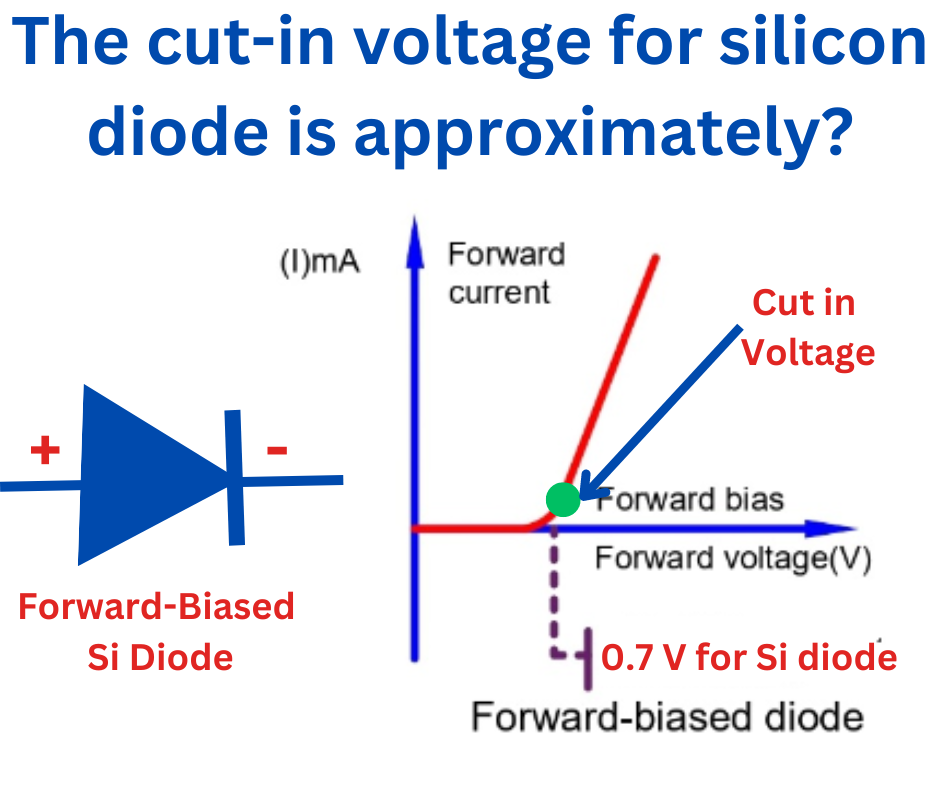Question- The cut-in voltage for the silicon diode is approximately
A. 0.2 V
B. 0.5V
C. 0.7 V
D. 1.1 V
Solution:
The correct option is (C)
The cut-in voltage for the silicon diode is approximately 0.7 volts.
Explanation:
The cut-in voltage of a diode, also known as the forward voltage or threshold voltage, is the minimum voltage required to make the diode conduct electricity significantly in the forward direction. Below this voltage, the diode allows only a very small leakage current to pass and essentially behaves as an open circuit.

The precise value of 0.7 volts for silicon diodes is an empirical result that balances the need to overcome the semiconductor’s band gap energy with the energy provided by the applied voltage. This value is characteristic of silicon due to its specific electronic structure and physical properties. Other semiconductor materials, like germanium, have different cut-in voltages (around 0.3 volts for germanium) because of their different band gap energies and material properties.
Why Silicon Diodes Have a 0.7 Volt Cut-in Voltage
Silicon diodes typically have a cut-in voltage of about 0.7 volts due to the physical properties of silicon as a semiconductor material:
- Energy Gap: The cut-in voltage is closely related to the semiconductor material’s band gap energy. The band gap is the energy difference between the valence band (where electrons are bound to atoms) and the conduction band (where electrons are free to move and conduct electricity). For silicon, this band gap energy is approximately 1.12 electron volts (eV) at room temperature.
- Material Properties: When a silicon diode is forward-biased, electrons gain energy from the applied voltage and can move from the valence band to the conduction band, overcoming the band gap. The voltage at which enough electrons gain sufficient energy to cross the band gap and conduct electricity substantially corresponds to the cut-in voltage.
- Thermal Voltage Contribution: Part of the voltage applied to a diode overcomes the potential barrier created by the built-in electric field at the p-n junction. This potential barrier is influenced by the thermal voltage, which is a function of temperature. The thermal voltage at room temperature is about 26 millivolts.